QuestionHi Diane,
I am interested in keeping a leopard gecko. I
was wondering what would be the best
substrate for a leopard gecko. My local pet
store told me that sand was fine to use.
However, when researching I came across
many articles that discouraged the use of
sand. My local pet store also said not to feed
a leopard gecko any mealworms as they may
eat the internal organs of the gecko. Is this
true? All the books and articles seem to feel
as though mealworms are a staple part of a
leopard geckos diet. Another issue I An
struggling with is the subtrate for my leopard
gecko. Met local pet store said the sand is fine
for leopard geckos. However, I've read that
sand can cause impaction, which will kill the
poor gecko. I was also wondering if reptile
carpet is an apropriate substrate for leopard
geckos. Any other important information to
help with the health and happiness of my
future leopard gecko would be very grealty
approciated. Any designs or interesting ideas
for the setup of the tank would be great.
Thank you so much for all of your time and
knowledge.
-Nawshaer
AnswerHi Nawshaer,
Its good you are getting info before getting your leo. I am including a basic care sheet that I wrote to help you with info on the leo's needed care.
As to your questions.... the majority of pet stores are really clueless as to the proper care of the critters they sell so its best to do your research (as you are doing) before taking the word of a pet store as to correct care info.
Sand(and other loose substrates) should not be used as it can and does cause internal blockages. The calci sand is the worst as it encourages them to eat it and its a larger grain than other sands...stay away from any loose substrates. The reptile carpet is fine, but some leos get their claws stuck in it and the claws can be pulled out. I did use the reptile carpet but switched to the slate tiles for a more evenly distributed heat and safety to my leos toes. The tiles I use have a "texture" to them so they are not slick smooth at all. Very inexpensive... costs well under $20 to do a 20 gallon tank.
Mealworms do not, nor can they eat the insides of a leo. Leos chew the worms, therefore they are dead before they hit the stomach even if it were possible for it to bite the leos stomach.
Mealworms aren't the best choice for a staple diet as they have a lot of the hard outer body, which can also cause a blockage. When mealworms are fed, the "good" ones are the ones that are freshly shed(white ones) as the outer shell isn't hard at all. Superworms are a better choice for larger leos....some places do carry smaller sized(younger) superworms which are great for smaller leos. As with all insect eating reptiles, variety is the best diet for them.
As to set ups, if you do a google search on "leopard gecko Habitats" you will find lots of pictures...of course you will see many that are using sand, which is a shame because some of the setups are very nice...just replace the sand with a safe substrate/flooring. I like giving people this link as it shows what is needed and a good way of how to set up the cage although some of their info is a bit off, such as temperatures and tank size...a 20 gallon tank is much better for a single leo (possibly 2) as its much easier to give them the temperature gradient zones they need and have room for all the hides they need..and of course more open room for "hunting" and "exploring".
http://www.drsfostersmith.com/pic/article.cfm?aid=2203
BASIC CARE FOR A LEOPARD GECKO
Leopards are pretty easy to care for but they do need
special care. Here are some of the basic needs of your gecko.
HOUSING: The need to have at least a 20 gallon long tank for one Leo. This needs to have a secure fitting screen top...they can be quite the escape artists!!! They need to have a humid hide box.You can make this with something as simple as a small plastic dish with a hole cut in one side and a small mesh bag filled with some Sphagnum moss coconut bark or Peat moss that you mist.
I made mine out of the small plastic folgers coffee containers...I cut an opening in the lid..and put the moss in..they LOVE it. I use the terrarium moss in mine.
I use that on the warm side of the tank. Be sure to provide a cool hidebox on the other end. I also provide a mid temperature hide...which is in the middle of the tank.I use the critter caves which you can purchase. NOT the ones that have heat in them!!!!
Provide secure climbing areas for your gecko. Fake plants, rocks and branches are all fine to use. be sure there are no wires or sharp ends to any fake plants you use.
*****SUBSTRATE:(that's the stuff on the floor of your tank) Newspaper, lizard carpet or paper towels work great and are easy to clean and are much safer than any loose substrate. Sand or other loose substrate is not recommended as that they can be deadly to the leo when it is ingested(eaten, even by accident while eating their insects)...A very graphic site of an impacted leo surg can be seen at http://homepage.mac.com/exoticdvm/reptile/PhotoAlbum181.html it is very graphic!!! ******What I have found that works great for safety and heat distribution is using about 1/4 inch of childrens play sand(since the tiles fit tight together, there is no sand danger) on the bottom of the tank and on top that you place ceramic or slate floor tile. What is nice is that the 12 x 12 squares fit perfect in a 20 gallon tank with no spaces between the tiles. The sand and the tile distribute the heat wonderfully. Using the under tank heater as described is what distributes the heat. Also,
overhead heat will help in heating the tiles...I've been using this set up for several years and the leos love it. Using a tile that isn't smooth is recommended. **********
TEMPERATURES: They need a warm area of 88-92 degrees and a
cooler area in the upper 70s, low 80s. At night their temperature can drop to the low to mid 70's.
Never use a hot rock for a leopard gecko...or any reptile.
They can severely burn any reptile. You can use a heating
pad under the tank,under tank heater, or you can use a regular household lightbulb in a dome fixture with a ceramic socket in it to keep the warm area at the 88-92 degree area.At night, no white light. If room temperatures stay above 70 degrees, no extra night heat is needed. The undertank heater or heating pad should cover about 1/3 of the tank....be sure to raise the tank up about 1/4-1/2 inch off the stand when using an undertank heat source to prevent heat build up which can cause the glass to break and hot spots in the glass. Be sure to have a good layer of newspaper, carpeting or, even a thin flat rock(such as tile) on top the area that the undertank heat source is placed...if you use a thin rock or tile, it helps to distribute the heat very well.
You can use the special nighttime lights that are designed for reptiles. I like using a ceramic heat emitter on a thermostat for nighttime heat.
DO NOT use black lights or party lights as they can cause eye damage!!!!
The wattage you use will vary based on room temperature and size of tank.
LIGHTING: Leopard geckos do not need UVB lighting but it does not hurt them to give them uvb. They should have some type of light during the day, be it a uvb tube, regular florescent light, reptile day light or regular household lightbulb. NO white lights at night!!!
FEEDING: Geckos should not be fed crickets or other insects that are bigger than the space between their eyes. Generally, hatchlings can be fed more than once a day,juvys can be fed twice a day, adults are fed once daily or every other day, in the early evening. Crickets and other food items such as silk worms, super, and an occasional treat of a wax worm, need to be dusted with a calcium supplement two times a week and also they should have a small dish of calcium in their tank. I use the lid of a milk jug for the little dish of calcium in their tank. For dusting the insects, Use a calcium with no added phosphorus. Insects must be gut loaded(fed) for at least 48 hours prior to feeding your gecko. Remove any uneaten crix or superworms after 15-20 minutes..... Place a piece of cut potato in the tank so that if you have missed any uneaten insects, they will eat the potato instead of nibbling on your gecko!!!
*************You have to be sure to feed your crickets and insects the right foods before feeding them to your gecko. If your crickets/insects are not healthy and well fed, your gecko will not get the nutrition he needs. You can gut load your crickets and insects greens, veggies, cereals or specially designed commercial foods for crickets or the insects you are feeding. ************
Be sure to have a small dish of clean water for your gecko at all times!!
You can offer them some baby food or fruits on occasion ...
Mine will even eat a small piece of watermelon now and then.WATER: always provide a dish of drinking water. If you choose to mist your gecko to drink, its best to not get the tank too wet as that they do not do well with higher humidity. Sometimes its better to take your leo out of their tank to mist them to get them to drink!!!
HANDLING: Some geckos enjoy being held...others prefer not to be handled at all. Be sure to be very gentle when holding your leo and NEVER grab them by the tail! Their tails are extremely fragile and will break.
I do suggest finding a vet that can treat reptiles BEFORE you actually need one!!! To find a vet that is able to care for reptiles:
http://www.herpvetconnection.com
http://www.arav.org/ECOMARAV/timssnet/amm/tnt_mdsearch.cfm
http://www.anapsid.org/vets/
For more information on leopard geckos:
http://www.drgecko.com
If you have any questions or don't understand something, please let me know.

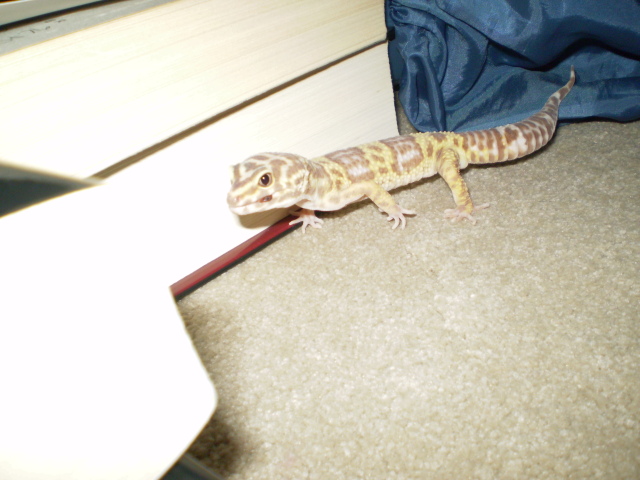 Leopard Gecko abscess
QuestionLeo Scab
QUESTION: Hello :)
I have had m
Leopard Gecko abscess
QuestionLeo Scab
QUESTION: Hello :)
I have had m
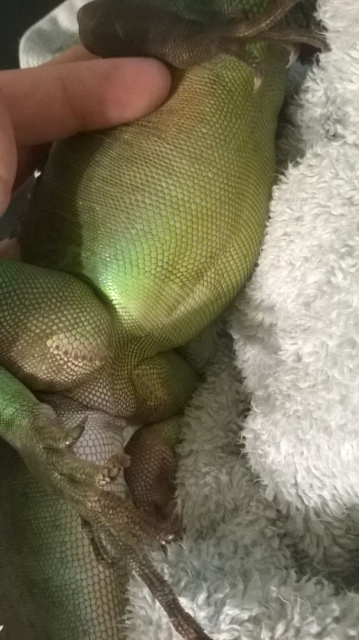 xerxes
Question
xerxes xerxes
Sorry for lack of i
xerxes
Question
xerxes xerxes
Sorry for lack of i
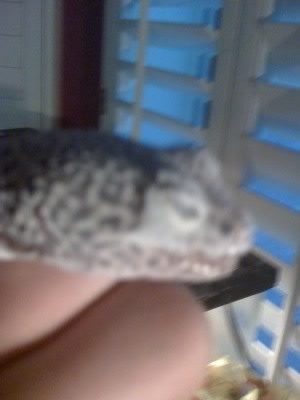 shed in my geckos eyes
Question
eye infection
i have two african fat tailed l
shed in my geckos eyes
Question
eye infection
i have two african fat tailed l
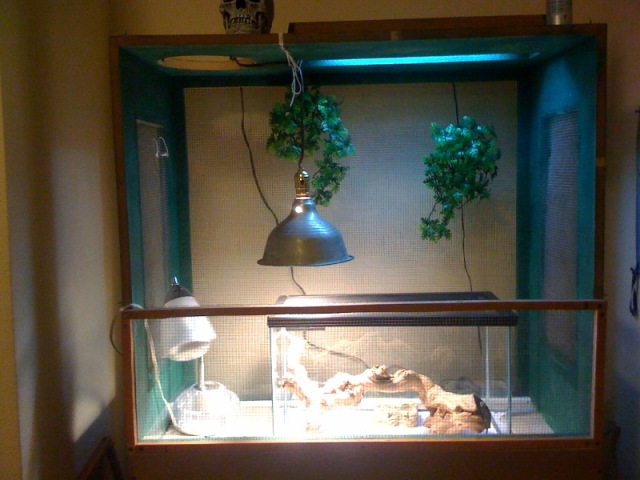 Am I over exaggerating??
QuestionSetup
QUESTION: So I just bought two bab
Am I over exaggerating??
QuestionSetup
QUESTION: So I just bought two bab
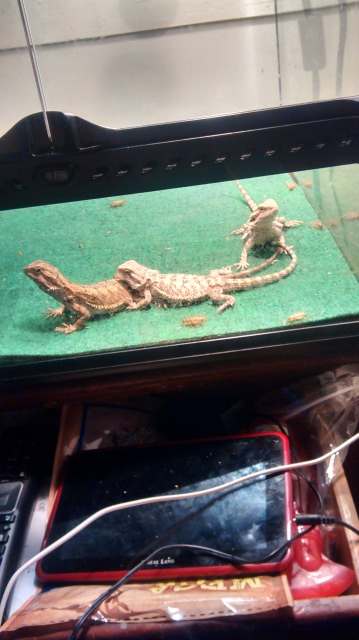 my bearded dragons
Questionmy dragons
QUESTION: Hello I have three
my bearded dragons
Questionmy dragons
QUESTION: Hello I have three